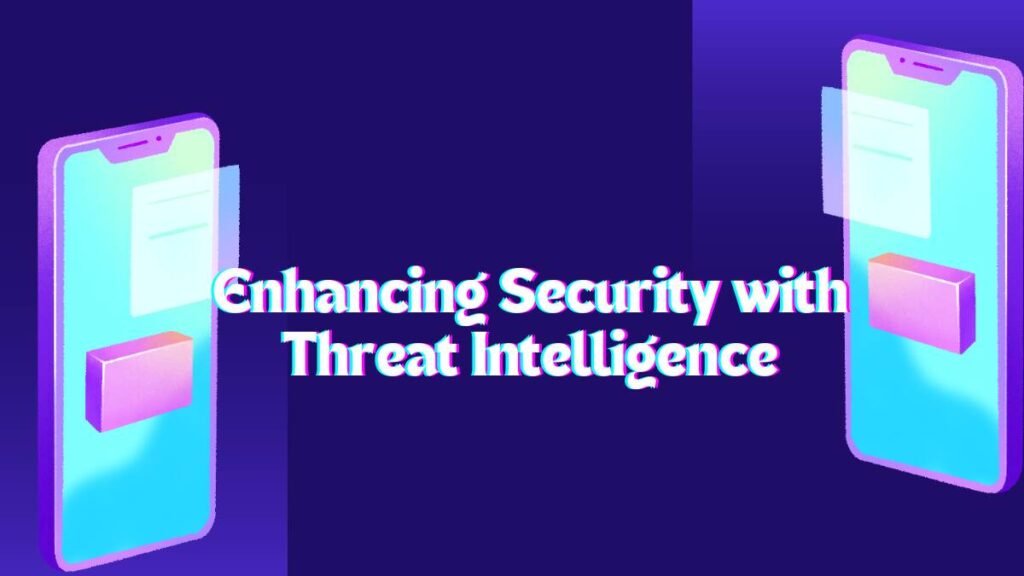Information Security Threat Intelligence: Ultimate Guide

Information security threat intelligence , organizations face a relentless barrage of cybersecurity threats. Information security threat intelligence has emerged as a critical component in helping businesses stay ahead of these threats. Offering insights that can enhance their overall defense strategies. By harnessing timely, accurate, and relevant information about potential cyber threats, companies can proactively safeguard their systems, data, and operations. This article delves into the essentials of information security threat intelligence, discussing key concepts like risk management, data breach analysis. And the role of the Security Operations Center (SOC).
Information Security Threat Intelligence
Threat intelligence refers to the data collected, analyzed, and shared to help organizations identify and respond to potential cybersecurity risks. This intelligence helps security teams comprehend the tactics, techniques, and procedures (TTPs) used by malicious actors, allowing them to devise appropriate defense mechanisms. By understanding the threat landscape, companies can better prioritize their resources and strengthen their security posture. The core of threat intelligence lies in its ability to convert raw data into actionable insights. This means analyzing vast amounts of data from different sources—internal logs, external feeds, and intelligence platforms—to discern patterns and detect anomalies.
The Evolving Cyber Threat Landscape
The cyber threat landscape is vast and constantly changing. Cybercriminals are becoming more sophisticated, and the attack methods they use evolve just as quickly as the defenses businesses put in place. With an increasing reliance on digital systems, cyberattacks have expanded in scale and frequency, targeting sensitive data, disrupting operations, and causing reputational damage. Advanced Persistent Threats (APTs) have become one of the most alarming elements in today’s cyber landscape. These prolonged attacks are often carried out by nation-states or organized cybercriminal groups. APTs are stealthy, well-funded, and aim to steal sensitive information over a long period.
The Role of Risk Management in Cybersecurity
Effective cybersecurity isn’t just about reacting to threats; it’s about anticipating and mitigating them before they can do harm. Risk management plays a pivotal role in this proactive approach. It involves identifying potential threats, assessing the likelihood and impact of these threats, and implementing measures to reduce or eliminate risks. Information security threat intelligence feeds directly into the risk management process. By providing detailed insights into potential vulnerabilities and the methods cybercriminals use, it allows organizations to prioritize their defensive measures. For instance, if a company knows that a particular type of malware is targeting its industry.
Must Visit: Flex Frost
Data Breach Analysis

Data breaches are a harsh reality of the modern digital age. They result in significant financial losses, legal penalties, and damage to an organization’s reputation. However, while data breaches are damaging, they also provide valuable insights that can help prevent future incidents. Data breach analysis involves investigating the root cause of a breach, identifying the weak points in a system, and determining how attackers were able to exploit them. This process enables companies to shore up their defenses and ensure that similar breaches don’t happen again. By integrating data breach analysis with threat intelligence, organizations can create a more robust security framework. For example, if a breach was caused by a phishing attack, the intelligence gathered from that breach can inform the company about potential phishing trends, allowing it to train employees and develop better detection systems.
The Role of the Security Operations Center (SOC)
The Security Operations Center (SOC) is the hub of an organization’s cybersecurity efforts. It operates around the clock, monitoring systems, networks, and data to detect potential threats in real-time. The SOC is responsible for not just identifying potential security incidents but also responding to and neutralizing them quickly to minimize damage. Incorporating threat intelligence into SOC operations enhances its efficiency. By having access to up-to-date intelligence on threats and vulnerabilities, SOC analysts can detect attacks faster and prioritize incidents based on their potential impact.
Advanced Persistent Threats
Advanced Persistent Threats (APTs) have been making headlines due to their highly sophisticated nature and the significant damage they can cause. These attacks often target government institutions, large corporations, and even critical infrastructure, making them a serious concern for national security. APTs are characterized by their long-duration attacks. Hackers behind these threats invest a significant amount of time in reconnaissance, exploring their target’s weaknesses, and then carefully executing their plan over months or even years. The stealthy nature of APTs makes them difficult to detect using traditional cybersecurity methods.
Enhancing Security with Threat Intelligence

Information security threat intelligence offers numerous advantages to organizations looking to bolster their cybersecurity efforts. It allows for the early detection of emerging threats, helps prioritize defense strategies based on the most pressing risks, and provides insight into potential vulnerabilities within the system. Furthermore, threat intelligence fosters collaboration across industries. Many intelligence-sharing platforms allow companies to exchange information about new threats, enabling the entire business ecosystem to improve its defenses. This kind of collective defense is crucial, especially as cyber threats become more sophisticated and widespread.
Conclusion
In the age of digital transformation, cybersecurity is no longer just a technical concern—it’s a business imperative. Information security threat intelligence plays a crucial role in helping organizations stay ahead of potential threats by providing them with actionable insights into the cyber threat landscape. Whether it’s combating APTs, mitigating risks, or learning from past data breaches, threat intelligence empowers businesses to take proactive measures to protect their assets. For organizations that want to stay secure in this ever-evolving digital age, integrating threat intelligence into their security operations is not just a smart move—it’s essential.
FAQs
What is information security threat intelligence?
Information security threat intelligence is the process of collecting, analyzing, and using data to identify potential cybersecurity threats and vulnerabilities.
Why is risk management important in cybersecurity?
Risk management helps organizations prioritize and mitigate potential cybersecurity threats before they cause significant damage.
What are Advanced Persistent Threats (APTs)?
APTs are sophisticated, prolonged cyberattacks that aim to steal sensitive data over an extended period, often targeting high-value assets like government institutions and corporations.
How does a Security Operations Center (SOC) benefit from threat intelligence?
SOCs use threat intelligence to detect and respond to cyber threats faster, enabling more efficient and effective incident response.
What is the role of data breach analysis in cybersecurity?
Data breach analysis helps organizations understand how past breaches occurred and informs them of potential vulnerabilities, allowing them to improve their security defenses.
Read More: Analytics Software for Ecommerce





